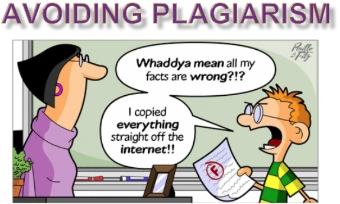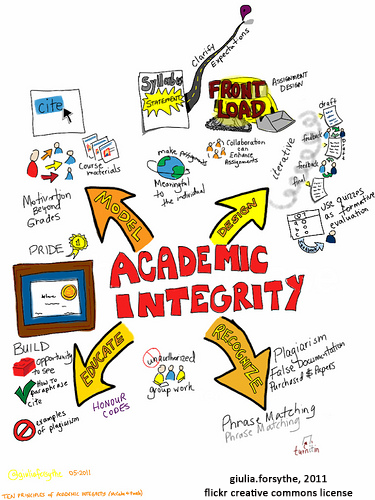Referencing

Refrencing PP 6th Form Geography May 2018
These pages are currently being redesigned
What is Plagiarism?
“to take the work or ideas of
someone else and pretend it’s one’s own”
(Oxford English Dictionary, 2002)
- Plagiarism is considered as unethical in the UK and is treated as misconduct by the School and Examination Boards. Acknowledging the sources you have used avoids any accusations, this is referencing your sources. There are various systems used for referencing. We recommend you use the Harvard Referencing System.
- “ Referencing is the process of acknowledging other peoples work when you have used it in your assignment”
- Pears (2016, p.1)
Why reference?
Referencing adds weight to your argument and helps you to avoid plagiarism: the use of other people’s information and ideas as if they were your own.
Courtesy:
It is only right that you acknowledge the work other people have done that you will be using. It is a courtesy to acknowledge the work of others.
Credibility:
It allows others to locate the source material you have used in your work and gives weight to your own arguments and views. Using other people’s research shows you are familiar with all the current research (hopefully) in this field.
Helps Others:
Anyone reading your work can see that you are familiar with the work of other authors and academics and the main facts and arguments relating to your study. Your references can show how much effort you have put in to your essay! It helps examiners asses the quality of your work and trace the sources you have used.
Helps Yourself:
Good referencing will get you good marks and make your work more credible.
Honesty:
If you had put a lot of work into a project wouldn’t you want others to say thank you and acknowledge your effort and ideas?

Basic principles
- The basic principles of referencing, from the international standard BS ISO 690: 2010, are:
- Clearly identify the material being cited: include sufficient information.
- How specific do you need to be?: Do you need to refer to the entire document or to a specific part of a document? This will depend on the purposes of the citation and the use that you make of the material being cited.
- Take the information from the resource being cited.
- Make sure the information in the reference reflects the specific copy or instance of the document that was used. For online documents that are subject to change, such data include the uniform resource locator (URL) of the particular version that was used and the date on which the document was accessed.
- Be consistent: follow the guidance in the Harvard guidelines above or the style guide that you are advised to follow below so that you use a uniform style, format and punctuation scheme for all your references.
- If you are inconsistent, vary styles in the same assignment or you do not provide sufficient information to identify the resource, you are likely to lose marks.
- When you proof read your assignment, check for errors in punctuation, check that all elements of the reference are included and check that all the cited works appear in your references list.
- Further adviceLanguage and structural mistakes in your writing create a bad impression. They can impede understanding and result in a lower mark or even failure of an assignment. It is very important, therefore, that you check your work very carefully for:
- General layout
- Text organisation
- Coherence
- Grammar, spelling and punctuation
- Referencing
- Style
- Overall impression
- Remember
- It is up to you to develop your own strategies for doing this effectively. Here are a few general tips:
- Try reading your work out loud, either to yourself or to a friend. This is particularly effective for checking punctuation, grammar and general coherence. It’s usually much easier to find mistakes in someone else’s writing.
- Read through fairly quickly, simply underlining or highlighting any words that don’t look right or where you think there might be a grammar problem. Then when you’ve finished check these in a dictionary or grammar book. In this way, you’ll also get an idea of the overall structure and flow.
- Make a list of the type of mistakes you make, and pay particular attention to these when you’re checking your writing.
- Don’t forget to use the computer spellchecker, but don’t rely on it entirely. It won’t recognize errors such as “Their are many arguments …” Grammar checkers will usually indicate where there’s a possible mistake, but they are not foolproof, so shouldn’t be relied on.
- Check early on in your department on the preferred referencing system and on general guidelines on layout and structure.
- Get some help if you do have problems with your grammar.
- Give yourself plenty of time to do this: you may realise that you have a lot of changes to make.
- Humanities Style Sheet: Referencing GuideYou should adopt the following practice in referencing for literature, drama and creative writing assignments.
General Principles of Referencing
Titles of complete published works should be in italics. Hamlet distinguishes the play from the character, whose name is simply written Hamlet. Single inverted commas are used for titles of poems, short stories and essays within a published collection. ‘Araby’ in Joyce’s Dubliners. (‘Araby’ is the title of the short story referred to in the collection called Dubliners. Never use inverted commas for the names of characters).
- QuotationsShort quotations of no more than four printed lines (about forty words) should be enclosed within quotation marks and incorporated within the text of your essay. Include a footnote which gives the full reference, including the page reference to the quotation. Subsequent references or quotations from the same text are given as short titles in the text of your essay, like this:
- (Lermontov, Hero, p. 27)
- If the quotation is longer than four printed lines, it should be set off by indenting the entire quotation and put in single spacing. Subsequent quotations would employ the short title.
- Quoting poetrySingle lines or part-lines of verse should be put in quotation marks and incorporated into your essay: ‘Seal up the book, all vision’s at an end’. If you quote two to three lines of verse, indicate the ends of lines with / , as follows:
- ‘Thou, to whom the world unknown / With all its shadowy shapes is shown; / Who see’st appalled the’ unreal scene / While fancy lifts the veil between’
- If you quote more than three lines then set out the poem exactly as it appears in the original (or as near as possible to this).
- DramaIf you quote dialogue, set off the quotation in your text. Names of characters (if included in the quotation) are written in capitals. As with poetry follow the spacing and punctuation of the original as far as possible. It is helpful to indicate act, scene and lines referred to in the case of a play:
- King Lear II.4.254-58.
- EllipsisIndicate omitted material within a sentence by three spaced full-stops:
- ‘Medical thinking … stressed air as the communication of disease, ignoring sanitation or visible carriers.’
- Remember that the quotation should still make grammatical sense, in the context of its use. Always take care to introduce quotations properly and preserve the logic of your own sentence. It is preferable to avoid breaking your sentences by long quotations; instead, introduce the quotation by a complete sentence.
- ReferencingIn humanities style you document your sources by giving a footnote or endnote for the first reference, then subsequent short title references (see above). There should be an alphabetical list of works (a bibliography) at the end of your paper.
- Author’s surname, first name, Title of Work (Place of Publication: Publisher, date of publication of edition used]
- Works by two or three authors, reverse only the name of the first author, add a comma, and give the other name(s) in normal form. Works by more than three authors, you may name only the first author as given on the title page and add ‘and others’:
- Work in an Anthology; edited worksIf you are citing an essay, short story, or poem that appears within an anthology then you need to give the title of the anthology and any other relevant information as well.
- An article in a JournalThe page numbers provided in the bibliography should cover the entire article not just the portion you have used.
- Internet referenceYou may find that web addresses are sometimes very long; in that case you could use TinyURL.com – this free site compresses long URLs or web addresses into short versions.
- BibliographyIt is usual to separate primary sources, such as literary works from secondary sources, such as criticism.
- Some useful sites and sources to help you with referencing:
Open University – https://www.open.ac.uk/library/training-and-events/the-why-and-how-of-referencing
Cite Them Right free online referencing tool:
- Arthur Terry Library






